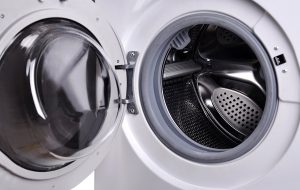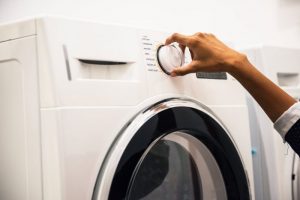Dryer sheets have been around for relatively a long period of time with their history dating back to the late 1960s. Most people tend to prefer them to the liquid fabric softener due to their affordability, convenience, recyclability, and multi-purpose nature.
Common Uses of Dryer Sheets
Actually, these sheets have become a household item as people have invented numerous ways to utilize them around their homes. Some of the common dryer sheets use include:
- Laundry purposes, as they help soften, reduce wrinkles while also adding scent to your clothes.
- Used as an air freshener. Simply attach a new dryer sheet over the slats (which is, of course, after removing one of your heat/air conditioning grates) to get the musty smell out of your home. Note: In this case, you need to replace your dryer at least once every week for enhanced airflow. That’s because it helps prevent dust build-up.
- Others use them to freshen up your dresser, stationery, and to also keep the bad odor out of your shoes.
- Used to clean up dry spills like flour.
- Iron cleaning. Run a warm iron over the dry sheet while on low heat.
- They’re used as soil holders, especially in flower pots which often lose soil. The rectangle is placed at the bottom of the pot to help hold the soil in place.
- Used to clean up stains on cooking pots and pans.
- They’re also used to kill pet odor as well as to remove pet hair from fabrics.
Common Ways to Recycle Used Dryer Sheets
Perhaps most people tend to have a bias for the dryer sheets considering their reusable and hence cost-effective nature. They can be reused in various ways including:
- Cleaning of electronics as they easily pick up dust and any specks of lint to reduce static electricity.
- Clearing of stubborn deodorant stains on clothes. Simply rub the stain away using a used dryer sheet.
- Dusting ceiling fans
- Sharpening dull scissors by cutting a dryer sheet using the dull scissors.
Are Dryer Sheets Really Safe?
But are the dry sheets really safe for you? Maybe they are or maybe they are not. Let’s first explore the ingredients of this seemingly cherished multi-purpose household cleaning product.

The Common Chemical Ingredients of Dryer Sheets
It indeed feels nice to have clothes that smell fresh, feel soft, and free of wrinkles, as well as free from the annoying static cling. And this is what dryer sheets offer.
Dryer sheets are made from a micro-fine polyester synthetic fabric which helps to create a guard against static build-up in most fabrics while also leaving behind a feeling of softness. This is in addition to certain chemicals designed to help keep your clothes and house space smelling fresh and pleasant.
However, most of these chemicals have been linked to serious health problems—which imply increased health risks to the user.
Some of these chemicals include:
- Benzyl alcohol. This is known to cause upper respiratory tract irritation and other respiratory and nervous system disorders such as headaches, reduced blood pressure, and nausea.
- Benzyl acetate. This might be a factor in pancreatic cancer. In most cases, you’ll end up feeling a burning sensation in your throat or maybe labored breathing once you inhale the vapor.
- Limonene. This chemical is a popular carcinogen
- Ethanol. Another compound, it’s known for causing central nervous system disorders.
- Pentane—is a known cause of depression, dizziness, fatigue, and in some cases, vomiting.
- Chloroform—inhaling chloroform vapor can cause drowsiness and also lead to headaches considering that it’s easily absorbed through the skin and the airways in your body system. As you know, you’re bound to inhale this vapor during the drying process as the chemical gets heated up and emitted into the air, and, of course, when you put on your already dried clothes.
- Alpha-terpineol—which can lead to depression, loss of muscle control, and also brain disorders.
- Dichlorobenzene—it’s what makes the dryer sheets anti-static. However, exposure to this chemical can lead to throat and skin irritation. Remember that the more you get exposed to it the more you become susceptible to kidney and liver disorders as it’s considered a possible carcinogen.
Note that most of these chemicals are also found in the liquid fabric softeners, thus making them equally harmful.
Since dryer sheets are used in the dryer, the chemicals are often released into the air in the heating process and hence posing a respiratory health risk to your family.
Here is how dryer sheets work
As opposed to liquid fabric softener (which is normally infused in the wash cycle and then penetrates deep into the fabrics’ fibers), dryer sheets often work on the surface of your fabric to ensure easy ironing, elimination of tough stains, and prevention of lint gathering by the clothes.
Their thin electronically conductive lubricant layer is majorly responsible for the soft feeling on your clothes. In addition, it promotes the reduction of static electricity. All you’ve got to do is to run a drying cycle with dryer sheets placed on top of the clothes. You can choose to use dryer sheets in either an electric dryer or a gas dryer.
The chemicals present in these dryer sheets then get heated up to eliminate any lingering electrostatic charges on the fabrics, thus ensuring zero shocks. This also leaves your clothes smelling fresh and pleasant.
However, these sheets tend to have negative effects on some fabrics like towels, microfibers, gym clothes, and even diapers. And that’s because they reduce their absorption rate. The effects also extend to your dryer as the sheets usually leave behind a residue that may end up clogging the lint filter screen thus reducing air circulation.
That’s why it’s always advisable that you clean the lint filter screen on a regular basis, at least monthly, using a dish detergent (mixed with hot water) and a fine brush.
Are you a die-hard lover of dryer sheets but still want to ensure your sound health state and that of your family? Then, here are some of the reasons to ditch these sheets for more health-friendly, eco-friendly, and cost-effective alternatives.
7 Reasons to Hate Toxic Dryer Sheets
Here are good reasons to reconsider using fabric softener sheets.
1 – Polyester in the landfills
Dryer sheets are made of polyester—which is a non-biodegradable material. Such materials lead to environmental pollution once they find their way into the landfills. There are far more eco-friendly measures to follow.
2 – Chemical saturation
These sheets come coated with chemicals that can cause lint accumulation hence leading to fire outbreak—which is a common phenomenon with dryer fires. This is highly possible considering the combustible nature of lint.
Sometimes the resulting lint build-up can also compromise the flow of air around the vents, thus providing a conducive environment for the molds to thrive. And once that happens, you can expect nothing more than an inefficient drying process.
3 – Coats your dryer parts
With time, the chemicals produced by the dryer sheets may also coat the electronic moisture sensor thus rendering it ineffective. In most cases, the moisture sensor will fail to shut off automatically—a situation that can expose you to the danger of a fire.
4 – Ruin your towels
Fabric softener will make towels less absorbent. In as much as the dryer sheets leave your towel feeling soft (which is what most people like), they greatly interfere with your towel’s absorbency level. This is a good reason to skip using dryer sheets on such fabrics.
5 – Impact fire-resistant toddler wear
They negatively impact the fire-resistant properties of your children’s pajamas and even nightgowns. Drying your children’s sleepwear with dryer sheets can easily make them highly flammable, thus exposing your young ones to fire hazards.
6 – Asthma and allergy flare-ups
The scent in the sheets is possibly too strong for people suffering from allergies and asthma.
In fact, you might have noticed that the companies involved in the manufacture of such products don’t disclose their products’ ingredients. Most of those ingredients are hazardous to human health as well as the environment.
7 – Contact dermatitis
Some users have linked their bouts with contact dermatitis, itchy allergic skin rashes, with the use of dryer sheets. This is thought to be due to the chemical ingredients and strong fragrances which can trigger inflammation.
What to do next?
What’s next after ditching your long-cherished dryer sheets? Are you going back to the annoying wrinkles, odors, and the whole static cling thing? Definitely not! Fortunately, there are plenty of natural alternatives out there to ensure that your clothes remain smelling fresh, free of static and wrinkles.
Alternatives to Dryer Sheets
Not only do these natural alternatives shield you from the health-related risks, but also protect the environment from the ever-rising pollution effects brought about by the emission of harmful chemicals into the atmosphere.
1 – White Vinegar
Adding white vinegar to your rinsing water helps remove any detergent residues from your clothes while also leaving them feeling soft. Though vinegar doesn’t have a strong smell like that of dryer sheets, it contains acetic acid, This makes it effective in ensuring odor-free laundry.
White vinegar is more preferred (for laundry purposes) over cider vinegar as it’s free of natural plant dyes (tannins)—which can sometimes leave traces of unwanted stains on your laundry. However, this doesn’t mean that you abandon your cider vinegar if that’s what you have on hand. You can still use it on your laundry. However, you must first dilute it with water to neutralize its coloring effect.
To get the best results, consider adding the vinegar to the fabric softener dispenser. Or, go the manual way by adding it to your final rinsing water. This also helps control the annoying static cling.
As opposed to dryer sheets, white vinegar is mild enough to protect your washable fabrics and hence safe to be used on all your children’s clothes including sleeping wear.
Note: Never mix vinegar with bleach since it can lead to the production of toxic chlorine as well as chloramine vapors—which can both cause throat, skin, and nose irritation while also causing conjunctivitis.
2 – Dryer Balls
The best thing about dryer balls is that they’re reusable. This makes them a great way to save on your cleaning budget. They’re also free of chemicals yet highly effective when it comes to clothes-drying, static removal, and fabric softening.
Simply add wool dryer balls to your dryer and throw in a few drops of organic essential oils of your choice for some natural fragrance (this is optional).

3 – Consider line drying to avoid static build-up on fabrics, especially those prone to static.
Though most people overlook this practice, it’s indeed one of the most effective ways to reduce static build-up on your clothes. In fact, it speeds up the drying process while also ensuring that the clothes don’t rub together.
Other than line drying and the above-mentioned methods, you can as well manage static cling on your laundry using various available natural fabric softener alternatives like:
-
- Ensuring reduced drying time. Over-drying can sometimes lead to static accumulation, and of course, inflated energy bills. And this is prone to happen when you deliberately choose to leave your clothes in the dryer even after they’re completely free of moisture—an act that will obviously lead to static build-up.
- Consider drying your synthetic fabrics separately. If possible, hang your synthetic fabrics (such as nylon and polyester) on your drying line outdoors or even indoors. However, drying them separately in the dryer also helps prevent static build-up.
Hint: The best way to discover more on the natural alternatives to the dryer sheets is to keep sharing and researching to discover what trick works best for others.
Final Thoughts on Ditching the Dryer Sheet Habit and Trying Safer Fabric Softener Alternatives
Though very effective with regard to laundry and general cleaning tasks, dryer sheets remain one of the less explored factors behind the ongoing global pollution effects.
Therefore, taking individual responsibility to stop using such harmful items is a great way to conserve the environment and the planet at large. In turn, you will support human life by promoting good health.
As we speak, researchers continue to document the harmful side effects of this seemingly convenient and freshening cleaning product.
Remember that keeping your laundry and house smelling fresh doesn’t have to come at the expense of your health. Nor do you need to endanger your loved ones. Instead, switch from dryer sheets to natural alternatives like vinegar, dryer balls, and hanging your clothes to dry. The last idea may seem more traditional. But it’s a real savior in all perspectives, including cutting down on your energy costs.


